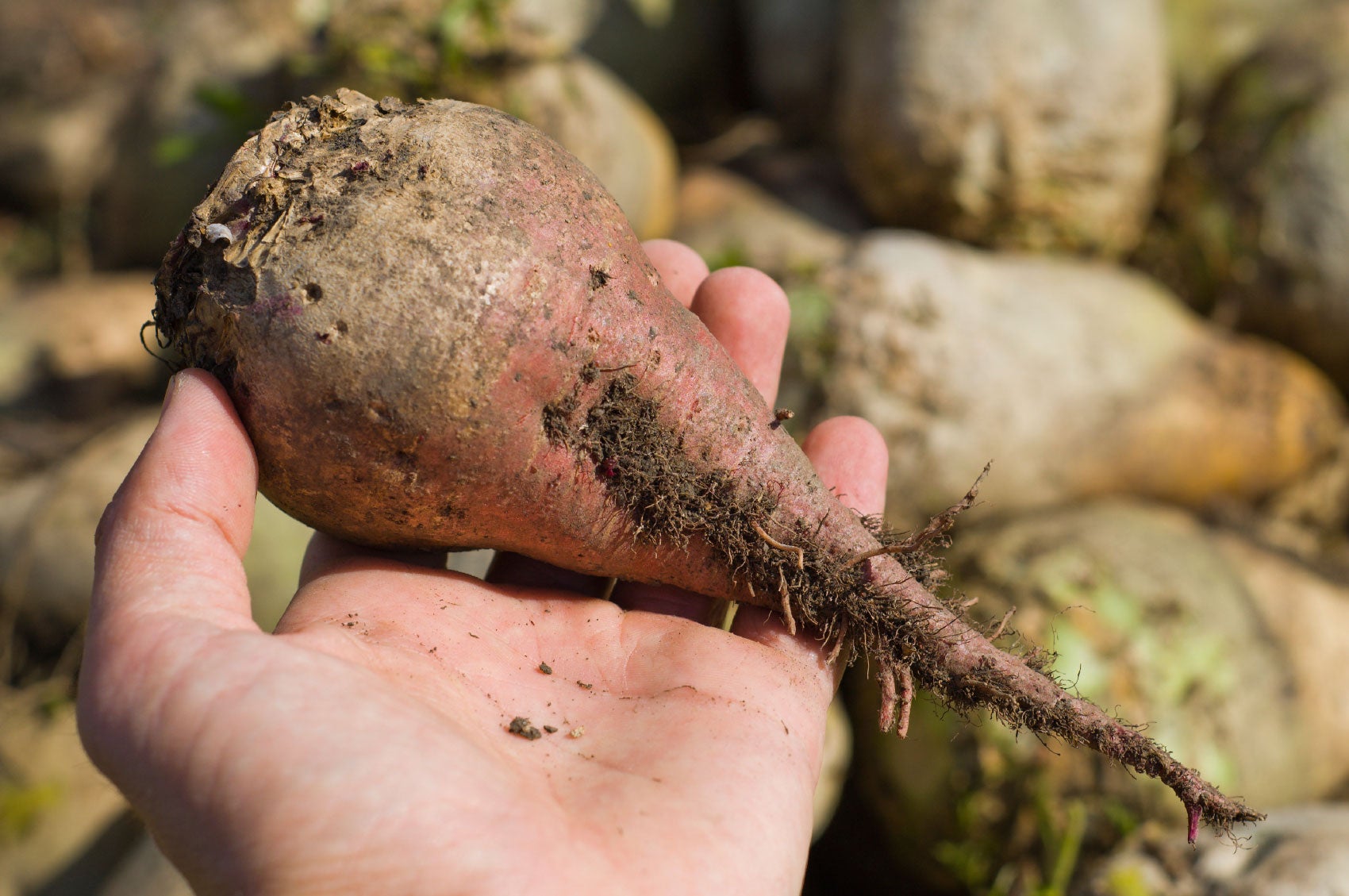Root Vegetable Storage: How To Store Root Crops In Sand

Every summer's end, at the peak of harvest time, many people find they have more produce than they can use, resulting in a flurry of activities attempting to can, dry, or freeze that which cannot be immediately put to use. You spent all summer nurturing your garden and you certainly don't want it to go to waste, but it can be exhausting trying to utilize every carrot, turnip, etc. There is another way-- sand storing root vegetables.
What is Sand Storing?
Did you know that the American household wastes more food per year than restaurants, groceries, and farms combined? A bountiful fall harvest, although a boon, may lead you to wonder about alternative root vegetable storage. Storing veggies in sand was mentioned above, but what is sand storing? Root vegetable storage, along with other crops such as apples, is not a new concept. Our forefathers, or mothers, used to store root veggies in a root cellar, often nestled in among sand. Using sand helps to regulate humidity, keeping excess moisture away from the vegetable so it doesn't rot and extending its shelf life. So, how do you store root crops in sand?
How to Store Root Crops in Sand
Storing root veggies in sand can be accomplished in a couple of simple ways. First of all, you can utilize your refrigerator's crisper drawer as a receptacle. Start with “play” sand-- the fine, washed type sand used to fill a child's sandbox. Fill the crisper with a few inches (8 cm.) of sand and tuck in root veggies such as turnips, carrots, beets or rutabagas, as well as any firm-fleshed fruits like apples or pears. Cover them with sand, leaving a bit of space between each so air can circulate. Fruit should be kept at least an inch (2.5 cm.) apart. Do not wash any produce that you are sand storing, as this would accelerate decomposition. Just brush off any dirt and remove any green portions such as carrot fronds or beet tops. You can also store produce in sand in a cardboard or wood box in a cool basement, pantry, cellar, shed, or even an unheated garage, provided the temperature doesn't drop below freezing. Just follow the same procedure as above. Veggies should be kept separate from apples, which give off ethylene gas and can hasten ripening, hence decomposition. Root veggies that grow vertically, such as carrots and parsnips, can be stored the same way, in an upright position within the sand. To truly extend the life of your root vegetables, it's a good idea to keep them in a dry place for a day or two so the skins can cure or dry prior to entombing them in sand. Potatoes, carrots, turnips, radishes, beet root, Jerusalem artichokes, onions, leeks, and shallots can all be sand stored with excellent results. They will keep for up to six months. Ginger and cauliflower will also sand store well. Some folks say that Napa cabbage, escarole, and celery can be stored using this method for a couple of months. If you have a surfeit of produce and your neighbors, friends, and family refuse to take any more, an experiment as to what other veggies may benefit from sand storing might be in order.
Sign up for the Gardening Know How newsletter today and receive a free copy of our e-book "How to Grow Delicious Tomatoes".

Amy Grant has been gardening for 30 years and writing for 15. A professional chef and caterer, Amy's area of expertise is culinary gardening.
